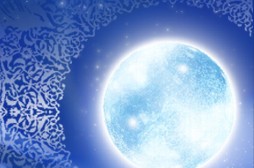Dorothea Tanning
| Dorothea Tanning | |
|---|---|
 Max Ernst and Dorothea Tanning in 1948. Photo by Robert Bruce Inverarity in the Smithsonian Institution collection.
|
|
| Born | August 25, 1910 (age 96) |
| Occupation | Painter, sculptor, printmaker and writer |
Dorothea Tanning (born August 25, 1910) is an American painter, printmaker, sculptor and writer. She has also designed sets and costumes for ballet and theatre.
Contents
|
Biography
Born in Galesburg, Illinois, Tanning lived in Paris for twenty-eight years. Having moved to New York she exhibited with the Julien Levy Gallery prior to meeting the German painter Max Ernst in 1942 and married him four years later (his fourth wife, after Luise Straus-Ernst in 1918, Marie-Berthe Aurenche in 1927 and Peggy Guggenheim in 1942). He introduced her to the circle of the Surrealists. Her best-known work, Eine kleine Nachtmusik (a dark painting laden with symbolism; ironically named after Mozart's light-hearted serenade), shows that she became a member of that group for a while, but later her painting style became prismatic and lyrical.
During her 95th year, a New York gallery published a new monograph entitled Dorothea Tanning: Insomnias 1955–1965. Her most recent museum exhibition was organized by the Philadelphia Museum of Art entitled Birthday and Beyond mounted in 2000 to mark their acquisition of Tanning’s celebrated 1942 self-portrait, Birthday. In the 1940s, when she was one of the painters in Julien Levy’s stable, Tanning painted within the idiom of surrealist representation. By the mid-50s, her work had radically changed. As Tanning explains, “Around 1955 my canvases literally splintered . I broke the mirror, you might say.” Insomnias (Moderna Museet, Stockholm) — the group takes its name from a painting of the same title that Tanning made in 1957 — are forays into the realm of conjured energies. They represent a forceful shift at a particular, postwar moment that continues to reverberate today. In his essay for Dorothea Tanning: Insomnias, Charles Stuckey describes these “seemingly multidimensional mindspaces” as “among the most ambitious and sophisticated paintings to address the dilemmas of imagination and culture in a new atomic, space-race age.”
Following her retrospective at the Centre Pompideau organized by Pontius Hultan in 1974, Tanning returned to New York in 1978 following the death of her husband. In her ninth decade, Tanning has been frequently publishing poetry in The New Yorker and completing several books. Her most recent novel is Chasm.




Collections

- Smithsonian American Art Museum
- Tate Modern
- Philadelphia Museum of Art
- Hood Museum of Art
Bibliography
- Abyss (New York: Standard Editions, 1977)
- Birthday - Memoirs (Lapis Press, 1986)
- Between Lives - Autobiography (WW Norton, 2001)
- A Table of Content - Poetry (Graywolf Press, 2004)
See also
- Max Ernst
- Surrealism
- Visionary art
- Magic realism



